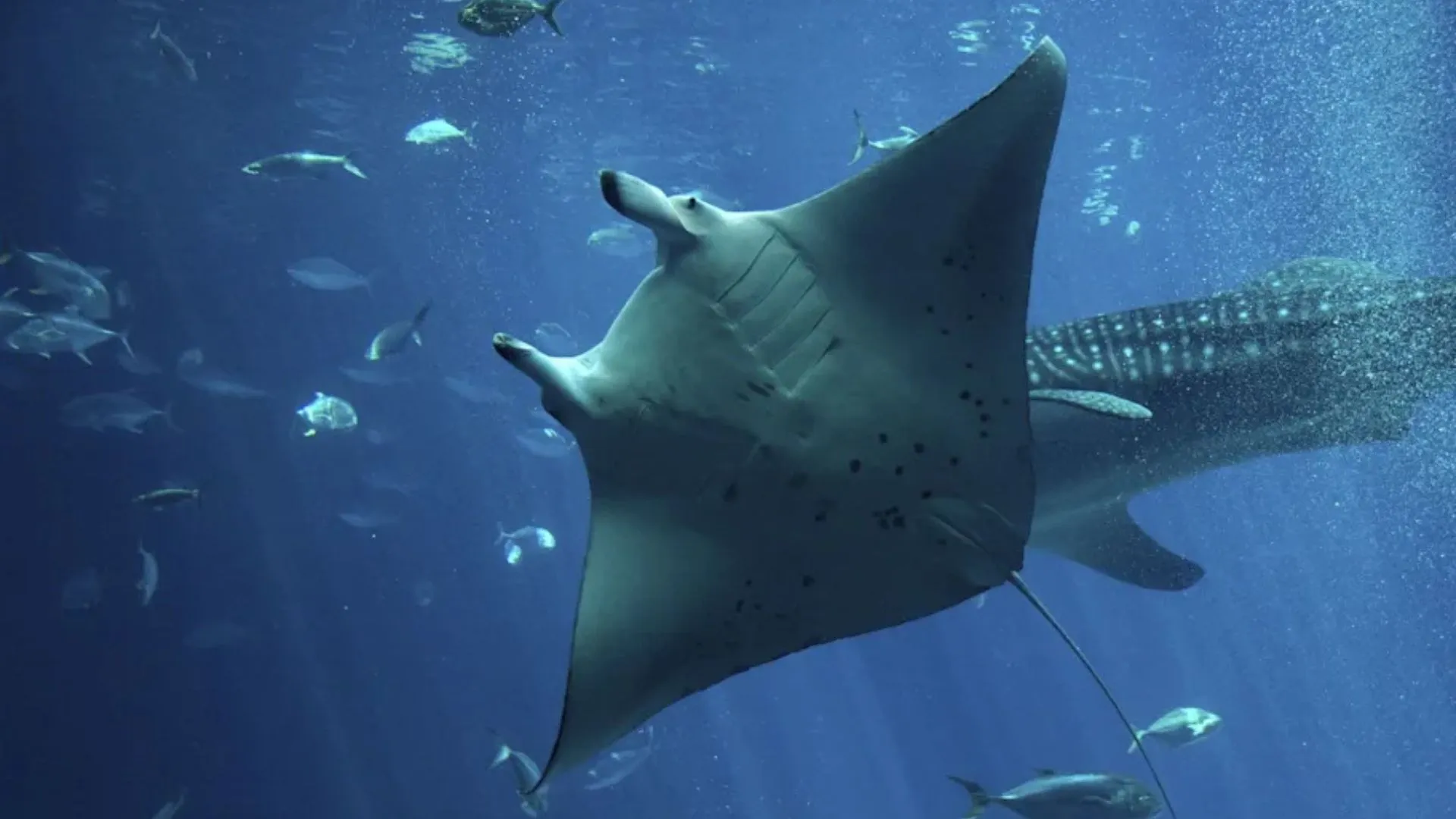
New research has found that oceanic manta rays, the largest ray species, can dive to extreme depths.
International researchers led by Murdoch University, Australia, tagged the rays in Peru, Indonesia, and New Zealand.
Interestingly, it was found that manta rays can dive deeper than 1,200 meters (nearly 4,000 feet).
“We show that, far offshore, oceanic manta rays are capable of diving to depths greater than 1,200 meters, far deeper than previously thought,” said Dr Calvin Beale, first author, who completed his PhD at Murdoch University.
“These dives, which are linked with increased horizontal travel afterward, may play an important role in helping mantas gather information about their environment and navigate across the open ocean,” Beale added in the press release on October 15.
Data collected for 2,705 days
Deep-ocean diving is common for marine species like sharks, tuna, and turtles. However, this behavior is observed less often in others.
The new work involved recording 2,705 data tag-days to investigate the deep-diving behavior in 24 oceanic manta rays for over a decade.
The manta rays were tagged at three locations: Raja Ampat (Indonesia), Tumbes (Peru), and Whangaroa (New Zealand). Eight electronic tags were recovered after detaching and floating to the surface.
“It is quite a challenging task, trying to spot a small gray floating object with a short antenna bobbing around in the waves with other flotsam and jetsam,” Beale said.
The recovered tags provided high-frequency data recorded every 15 seconds, while the 16 non-recovered tags sent summary data via satellite.
Extreme dives, defined as deeper than 500 meters (1,640 ft), happened on 79 days, reaching a maximum of 1,250 meters.
Most of these extreme dives took place in the waters off New Zealand.
A role in navigation
New Zealand mantas usually performed an extreme dive shortly after moving into the deep ocean beyond the continental shelf.
Interestingly, the data suggest these deep dives are not for feeding or escaping predators. The rays did not spend much time at the maximum depths.
Instead of diving to hunt, mantas may use deep dives to gather navigational information by sensing cues like changes in the Earth’s magnetic field and sampling deep-water shifts in oxygen, temperature, and light levels.
“By diving down and ‘sampling’ these signals, they could build a mental map that helps them navigate across vast, featureless stretches of open ocean,” Beale explained.
Movement after dives
These deep dives were followed by long periods of recovery at the surface.
These dives were typically followed by extended travel over the next few days, with rays covering over 200 km (124 miles). This supports the idea that the dives serve a navigation function.
Moreover, a few extreme dives were observed in Peru and Indonesia, likely because mantas in those regions tend to stay in shallower coastal habitats.
For instance, the shallow environment in Raja Ampat meant mantas had less need for navigational information from deep dives.
In contrast, New Zealand mantas moved through deep offshore areas where the steep drop in the seafloor made extreme dives possible and essential.
“Understanding the nature and function of deep dives helps explain how animals cross vast, seemingly featureless oceans and connect ecosystems thousands of kilometers apart,” Beale pointed out.